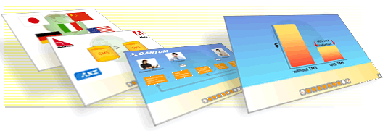 |

 Summary Summary
If your company produces software to market to overseas
clients, you may perhaps consider the language options
for your software to adopt. Software localization is
a very important step for the success of product localization.
What it means is to translate your software into the
language of your preference. Localization involves making
adjustments to the design and code base of your application
so that your software can support the many requirements
for non-English languages.
Read more about customized globalization solutions for software localization, internationalization, and technical translation. eTranslate is an international company specialising in the provision of Internationalization and Globalization Solutions.software localization,localization tools,software internationalization,language translation,french translation,translation service,latin translation,professional translation,machine translation,language localization
 Description Description
Many countries use different coding practices than those
used in English speaking countries. For example, China,
Japan, and Korea use double-byte character sets, while
(example) Australia uses a single-byte character set
(ASCII). To support the non single-byte environment
as well as various other requirements for international
languages, many changes in the code are necessary. These
include modifying the encoding method, text direction,
linguistic boundaries, wrapping and justification, font,
and sorting.
The goal of software localization is not just to produce
one single translated version of the software, but to
empower the software development team with the infrastructure,
methodology and language /cultural expertise to be able
to:
- Enable the existing software (the prime) to recognize
the different attributes associated with different
markets and provide support for them;
- Create a language variant for each market and finally
to;
- Evolve both the prime and the variant through subsequent
software releases.
These attributes are not limited to language, business
data formats, cultures and cross border usability requirements.
 Process Process
We have localization engineers at each local operating
office who have helped many clients localize their software
applications. These engineers analyse your software
code and then implement the necessary changes or provide
recommendations for the changes needed.
There are two stages to software localization:
1. The actual localization which involves
the re-engineering of the software to separate strings,
data handling routines, validation and error messages
into a resource repository ready for localization and;
2. The localization process which involves
the translation of the text and insertion of local business
data that is necessary to create a language /market
variant of the software.
Naturally, there are a number of changes to existing
software development and translation methods to achieve
the outcomes listed. eTranslate is well placed to provide
the consultancy and coaching to deploy these processes.
This is often performed through a proof of concept exercise.
 Benefits Benefits
After this exercise, your software is ready to be translated
in the future. Since the strings have been separated
for translation, it will be easier for you to have future
translation of your software in another language.
Also, without a doubt, your software can be enjoyed
by non-English speaking users. This automatically widens
your business coverage.
There is a profusion of softwares around the world,
ranging from education to security systems. A specific
timeframe and costs cannot reflect the different demands
for software localization. It is best for us to evaluate
your requisites and reflect on them.
| Contact us for further information –
Post your query now
|
|
 |
|

